in Camping / by
At Roofnest, we understand that our roof top tents are just half of the equation when it comes to elevating our customers’ camping experiences. The quickest, easiest, and most convenient roof top tent is only as good as the places it can take you.
From our home here in the Rocky Mountains to the frozen lakes of the White Mountains in New Hampshire, our roof top tents have taken campers to some life-changing locales.
But it’s Mother Nature that brings the goods. We just make it easier to get there.
That’s exactly why protecting the environment is so important when you’re exploring. If we want the outdoors to stay beautiful, we need to do our best to leave no trace when we go camping.
What is leave no trace? It’s exactly what it sounds like: If the next camper can tell you were at your camp spot, you’re doing it wrong.
But since you’re here reading this blog, we can assume you take environmental conservation as seriously as we do! That’s why we want to share a few ways to make it easier to minimize the environmental impacts of camping on your next adventure.
Pack It Out (All Of It)
While this may seem obvious, not all campers may be on the same page about what needs to be packed out—especially when it comes to biodegradable refuse.
Food is the biggest culprit here. Banana peels and orange peels, apple cores, bread, you name it.
Will most food decompose safely? In general, yes. But does it make the natural environment look like a landfill, and potentially pose a hazard to wildlife? The answer is also yes.
If you’re camping at an established campsite, use the garbage and recycling facilities to throw away your trash and food scraps.
If you’re backpacking, I’s important to pack out absolutely everything you bring in. That means limiting what you bring with you to the bare essentials.
Open batteries, gear, and other new items before you leave so the packaging doesn’t present a problem once you’re in the bush. Same goes for food packaging — consider bringing reusable bags or a bear canister that food can be stored in without packaging.
All generate should go into a dedicated trash bag that you can hang on the outside of your backpack.
Choose Your Camping Spot Carefully
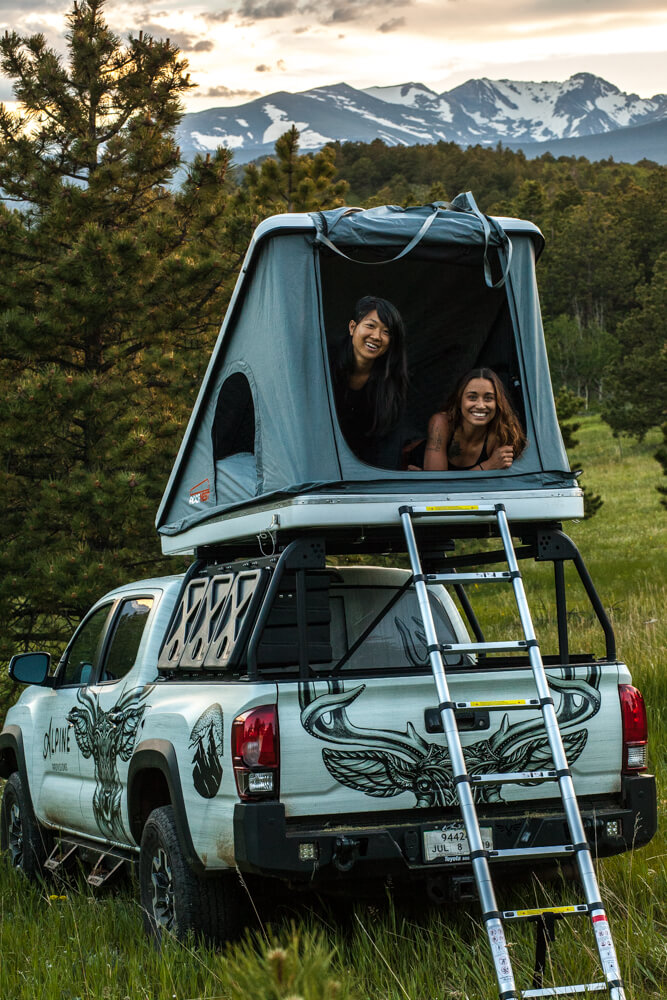
While you might love falling asleep to the sound of a babbling brook, it’s actually more sustainable to choose a camp spot away from water.
Why? Local wildlife relies on lakes, ponds, rivers, and streams on a daily basis. The sight (and noise) of your campsite could keep them away from precious water sources nearby.
For this reason, camp at least 150 feet away from natural water sources.
In general, practice “leave no trace” when setting up a campsite. Are there plants and flowers underfoot? Find a spot with less vegetation to set up your tent. Is there a bird nest or other animal wildlife nearby? Make some space to avoid disturbing them.
And of course, if there’s a sign saying “No camping,” follow the rules. More often than not, those signs are there to help protect the environment (and you, too!)
Do Not Feed the Wildlife
Wild animals have very specific diets, shaped by millions of years adapting to the local food chain. Your Twinkie can disrupt that pretty fast.
Human foods can be poisonous or bad for the health of wild animals. It can also make animals more comfortable (or even dependent) on humans for food. These animals may lose their fear of people, which can cause them to become a pest or end up hurting someone.
On top of that, animals that know they can get easy food from humans will crowd and compete with each other, potentially injuring one another and spreading diseases.
For your safety and the safety of the wildlife we all adore so much, keep your food safely stowed away when you aren’t using it, especially overnight.
A cooler with a latch or strongly-sealing lid can work for storage, unless you’re in an area where bears live. That can open just about anything. In bear country, you’ll want to invest in a bear-proof container, or better yet, put your cooler in your locked car overnight.
Many developed campsites also provide bear-proof storage bins for food.
Do not keep your food in your tent — the last thing you want is a coyote or bear sniffing around your head in the middle of the night. While a Roofnest is taller than most bears, bears are both clever and hungry.
Our tents are pretty amazing, but they aren’t certified to be bear-proof. We’re still working on that.
If you’re backpacking in an area with known wildlife (beyond insects and songbirds), you can either hang your food overnight from a high tree branch, or use a bear-proof canister.
Mind the Noise
To avoid disturbing the wildlife (or your fellow neighbors in the campground,) keep your noise to a minimum. Of course, you can chat and swap camp stories. The Bluetooth speaker, on the other hand, should stay at home, or be kept at a low volume.
To make this easier, keep the size of your camping group relatively small — 10 people around a campfire are a lot louder than 4!
Control Your Dog
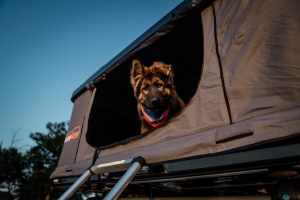
Camping with dogs is a national pastime. We can’t tell you to leave your pooch at home, especially when there’s a cozy spot in the corner of your roof top tent waiting for her.
But dogs can seriously disturb wildlife. If your dog isn’t keen to stay nearby on their own, use a leash to keep them in within the confines of your campsite.
Don’t allow your dog to go into the woods, even within your line of sight. Dogs can disturb wildlife and provoke defensive attacks from animals like moose, who see dogs as wolves, their natural predator.
Plus, your dog could eat something poisonous, bring back a dead critter, or otherwise hurt themselves by accident.
Barking dogs are another problem. The noise can disturb the surrounding wildlife, and your camping neighbors. If your dog is hard to control or barks a lot, you may want to leave them with friends or family for the weekend.
Go to the Bathroom Responsibly
We wrote a really in-depth blog all about taking care of business when you’re camping. Here are a few take-aways:
- Always relieve yourself 200 or more feet away from water sources to avoid contamination
- Bury your number two in a cat hole
- Dig a 6” hole at least 200 feet away from water sources
- Do your business
- Wipe with dead leaves or all-natural toilet paper and put in hole
- Cover with dirt
- Pack it out
- If it’s too cold or impossible to dig a hole, this is your only option
Dispose of waste in a sealable plastic bag (you can get kits for this that include absorptive gel to minimize odor)
Store disposal bags in a bigger bag that you hang from the outside of your pack
- Use a portable toilet
- A 5-gallon bucket with a snap-on toilet seat and built-in bags with absorptive powder
- Great for drive-up campsites
Read our full guide for more tips on going more comfortable and responsibly while camping »
Be Careful with Your Campfire
Campfires are one of the most enjoyable parts of spending a night under the stars, but they also present real hazards, especially in certain parts of the country.
In places like California and Colorado, campfires are regularly the source of wildfires that ravage thousands of acres of forest, destroying natural habitats and people’s homes alike. Why do you think Smokey Bear is so passionate about fire prevention?
Only burn campfires in designated areas, and follow local rules and signage. There may also be seasonal rules for burning fires, especially in dry climates where wildfires can start easily in certain times of the year.
Check the website or visitor’s office of the county or park where you’re going camping to make sure there are no campfire bans in place before you light up.
Once your campfire is burning, never leave it unsupervised. If it gets out of control, it can spread to surrounding brush or trees. On a dry day, a lone ember from your fire pit can be the culprit of a wildfire, so you need to be around to keep an eye out.
At the end of the night, before you go to sleep, be sure to fully extinguish your campfire after it has burned down mostly to ash. If you’re camping at an established campsite with fire pits, you can do this by dumping water on it. Use a stick to spread out the ashes and put out all the embers.
If you’re backpacking and have a fire in the wild, then there are a few important extra steps before you leave your site:
- Scatter any rocks you used to build a fire ring
- Once ashes are cool, dispose of them 200 feet away from water to prevent contamination
- It should look like you were never there
Lead By Example
Epic scenery, cute dogs, and a slick roof top tent make for some like-attracting social media posts. We love it, and encourage you to share your adventures and spread the joy of camping.
But keep in mind that when you share photos with your friends, you’re also setting an example for how to camp responsibly.
You may want to take an epic photo of your tent right up next to a mountaintop lake, or of you holding a baby bunny, but those are both examples of how not to camp. Don’t do it, and don’t share it.
Camping Responsibly in a Roof Top Tent
View this post on Instagram
A roof top tent does means taking a vehicle into a camp spot, which can disturb the environment if you aren’t mindful of where you park.
Fortunately, there are loads of accessible, legal, and oftentimes free places to camp in a car roof top tent. Read our guide on how to find a place to car camp in your roof top tent »
You might also like
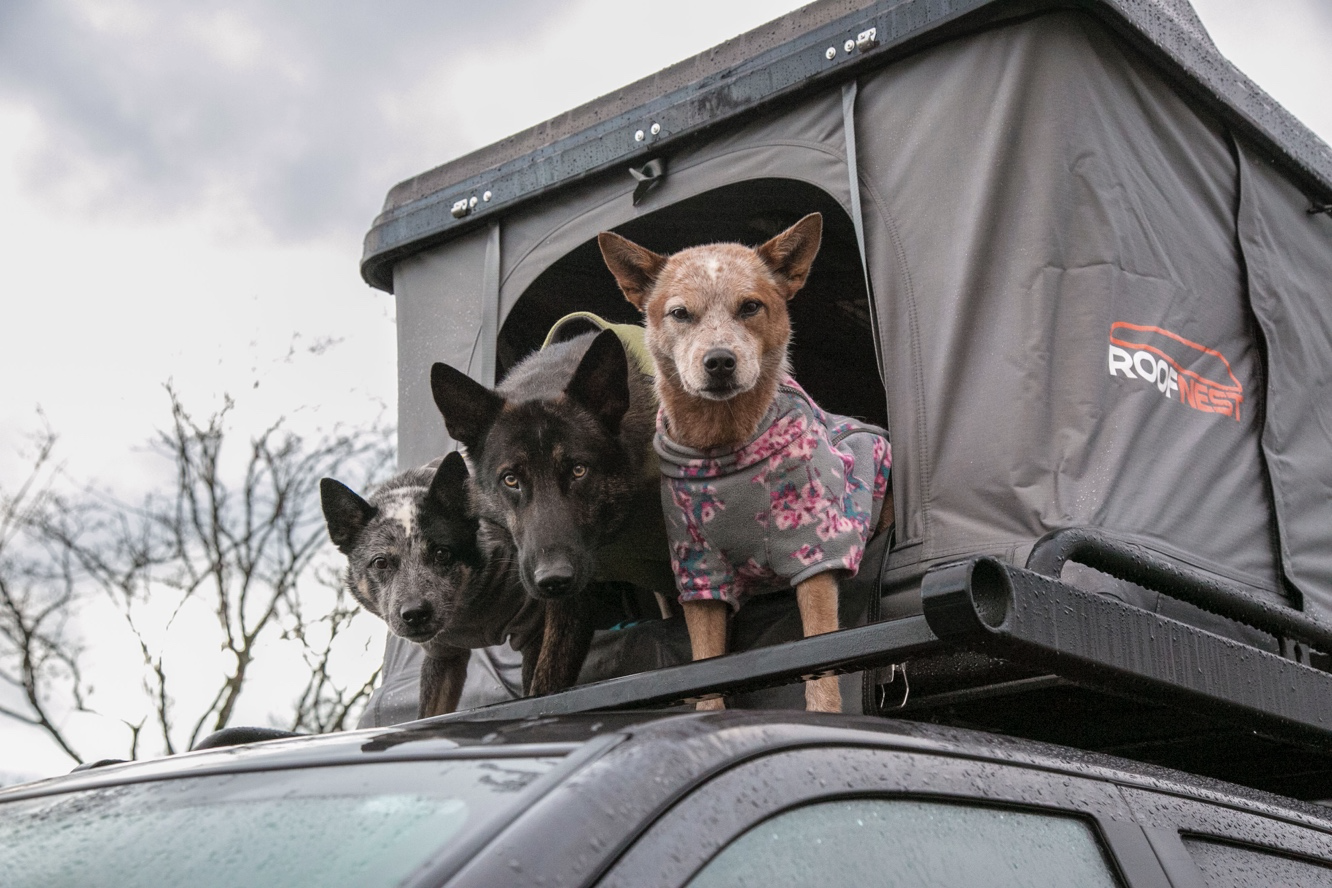
5 Best Ways to Get Your Dog Into Your Roof Top Tent
It’s a conundrum as old as time: How to safely and elegantly get your dog up into your Roofnest. Well, […]
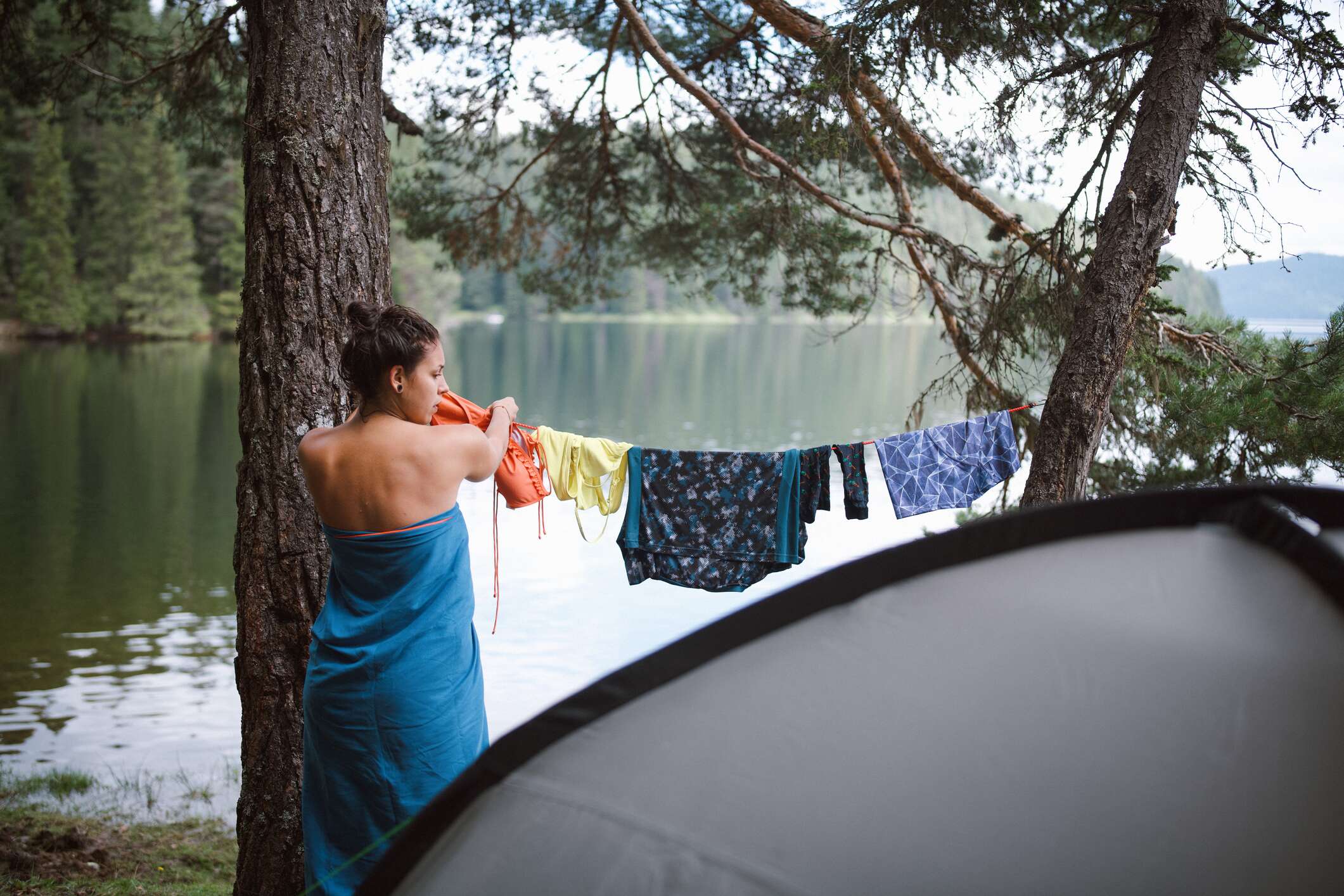
The Best Ways to Clean Your Clothes While Camping
Laundry is a chore pretty much nobody enjoys. And that chore can get a little more annoying during a long […]
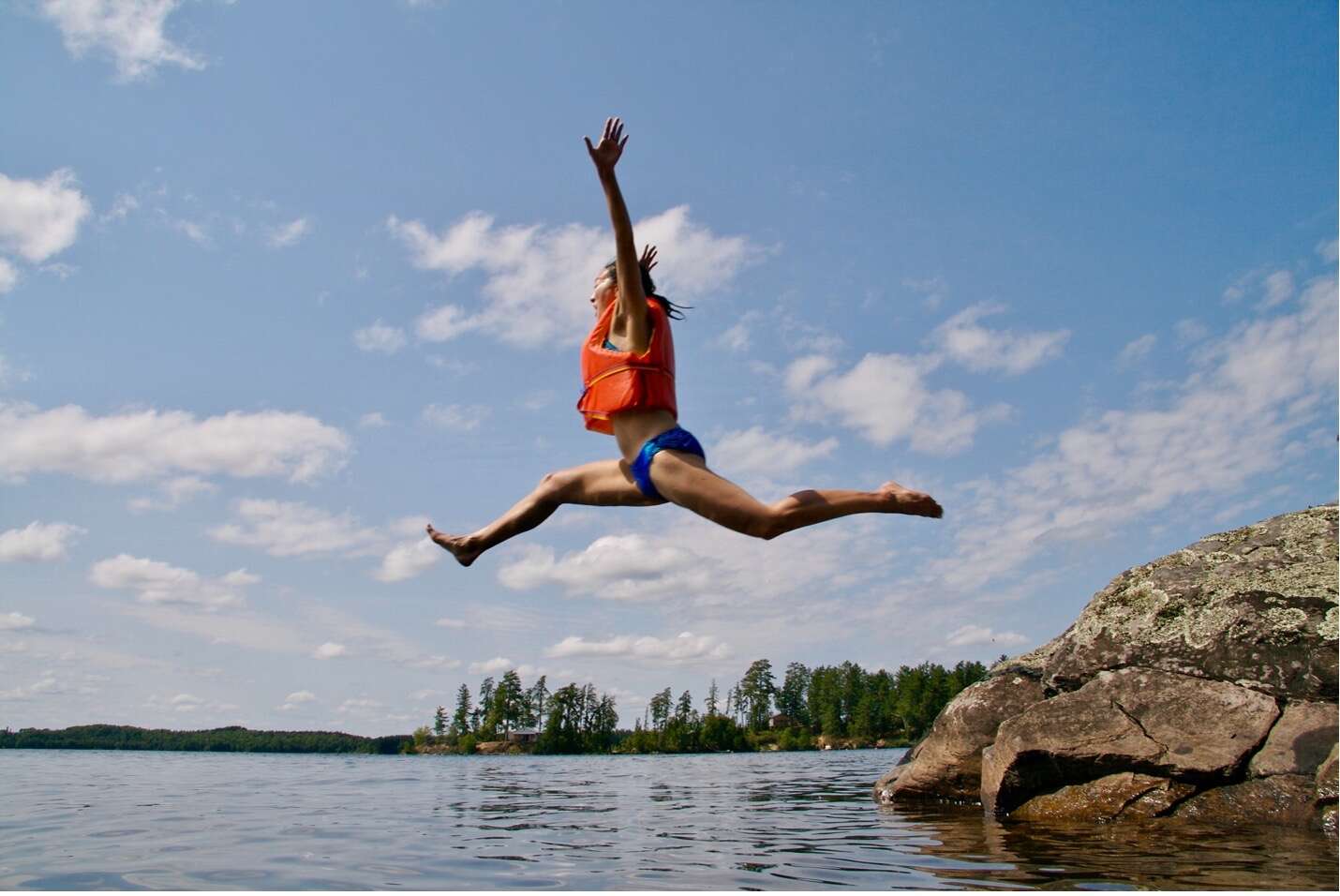
The Smartest Ways to Stay Cool While Camping
Author: Nick Jaynes Lying in bed at night during the cold winter months, it’s soothing to think about warm summer […]
